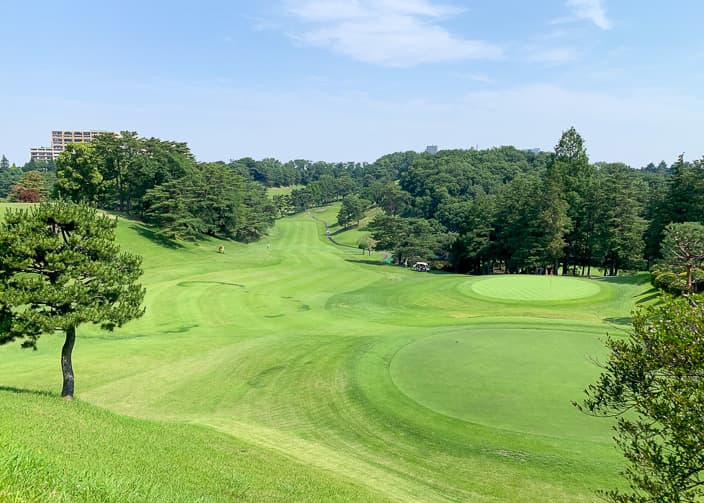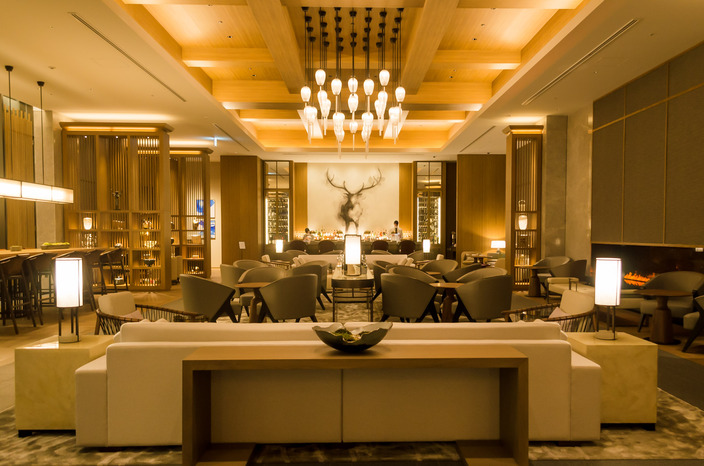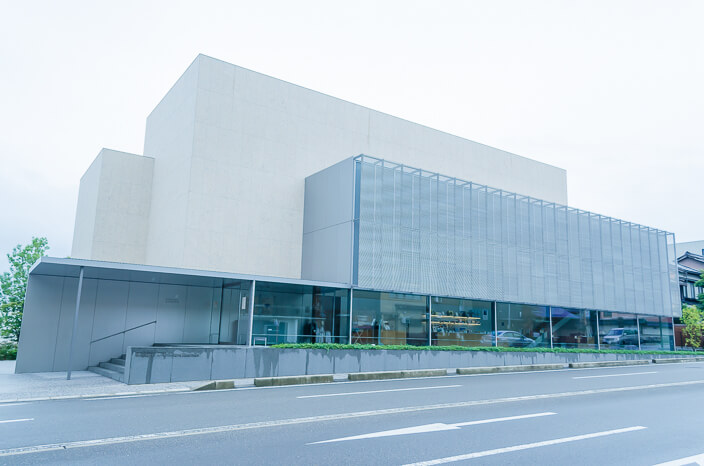Music and paintings later gained an artistic reputation, and their fame is often passed down to posterity along with their works. The golf course created by Seiichi Inoue, who is famous as a Japanese golf designer, is still highly evaluated as a property of the Japanese golf world, and in that sense, it deserves to be called a work of art.
The large hospital building in front of JR Ochanomizu Station is Inoue Ophthalmology, which celebrates its 140th anniversary this year, and is the oldest prestigious ophthalmology hospital in Japan, which is said to have been visited by the famous novelist in the Meiji era Soseki Natsume. Seiichi was born in Akasaka, Tokyo. His mother was the eldest daughter of the founder of Inoue ophthalmology hospital, and his father was adopted by her and worked as a hospital director and imperial palace doctor after studying in Germany. Therefore, Seiichi was planning to succeed his father as an ophthalmologist, but he suffered from an illness while attending Seikei High School and gave up on that path.
However, when he started playing golf for the purpose of treating the illness, his life changed drastically when he met a person in Izu Kawana, where he was staying for medical treatment.
That person is C.H. Allison, a well-known British golf course designer. He came to Japan in 1930 to design Tokyo Golf Club, Asaka course, and then stopped by Kawana Hotel Golf to design the Fuji Course on the way to Hirono Golf Club in Kansai. Seiichi, who was 22 years old at the time, aspired to become a golf course designer from his experience of working with Allison in Kawana, and decided to work hard on his research by ordering a lot of literature from overseas.
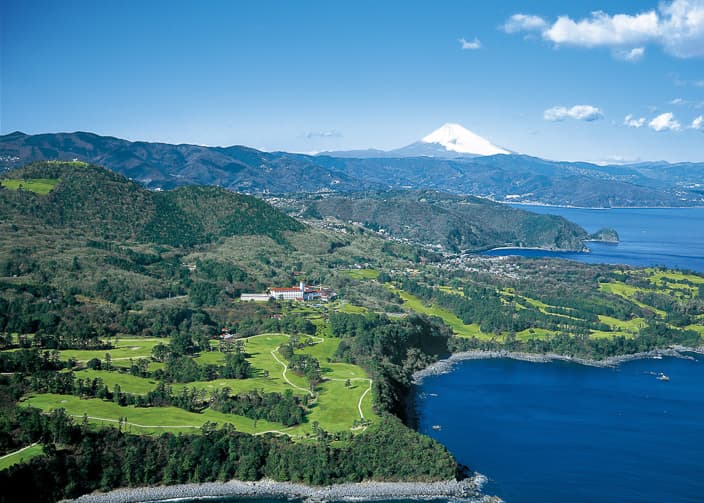
[related id=1851,1887 label=” Please read this too”]
C.H. Alison, who was 47-year-old at that time, did the amazing work of designing the prestigious three golf course and four remodeling during his stay of only three months, and never stepped on the land of Japan again, but his design technology and ideas would be inherited by many Japanese course designers and would contribute to the creation of many famous courses.
Among them, Seiichi Inoue is said to have inherited all of them, and creates so many famous courses, that it is said that there is no mistake in choosing Inoue, through a strict and uncompromising design concept. His designed course skillfully utilizes the natural landscape and terrain to achieve a unique and strategic layout with elegance and Japanese curvaceousness in harmony with nature, and continues to fascinate golf players even today.
Seiichi Inoue has 38 existing courses designed in his lifetime, but many of them are famous and prestigious member course, such as “Kasumigaseki Country Club”, “Yomiuri Golf Club”, “Oarai Golf Club”, and “Sapporo Golf Course” that are difficult for non-member players to play.
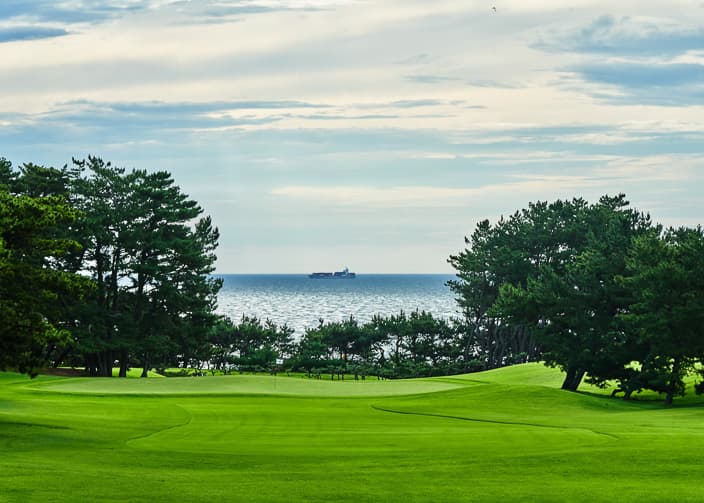
[related id=1906 label=” Please read this too”]
Among them, “Kawasaki Kokusai Ikuta Ryokuchi Golf Course” is a municipal public course, and anyone can enjoy playing on Seiichi Inoue’s course. Moreover, it is located in the suburbs just across the Tama River, which is convenient for transportation from central Tokyo.
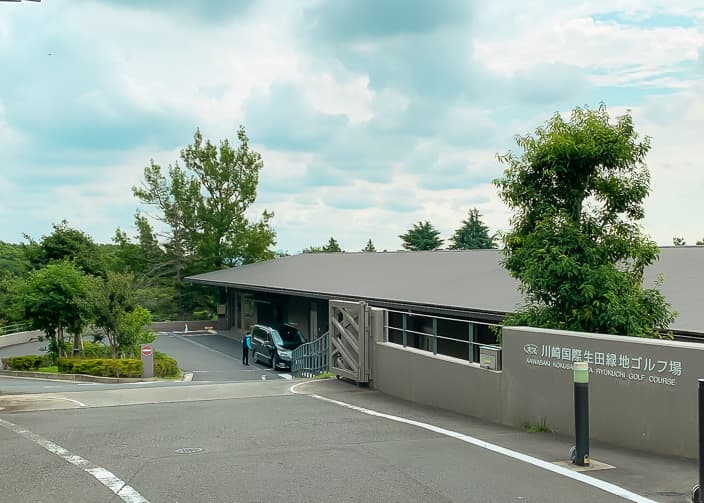
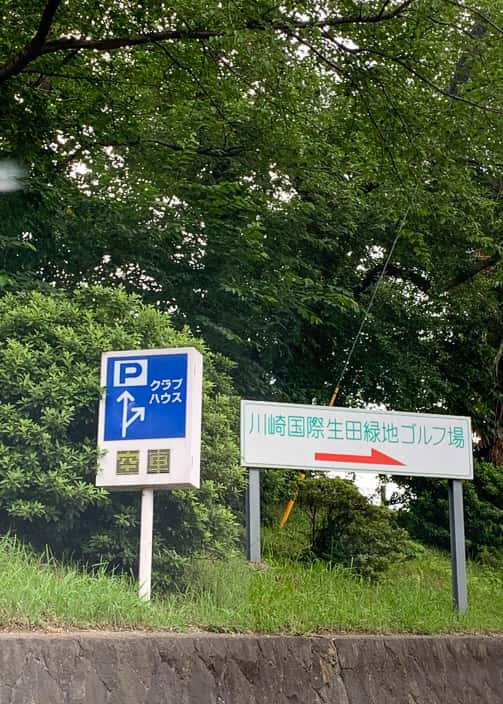
This course was opened in 1952 as the membership-based “Kawasaki International Golf Club”.
After the end of the war ll, many golf courses in the suburbs of Tokyo such as “Tokyo GC”, “Kasumigaseki CC” and “Koganei CC” were requisitioned by the occupation forces, and the courses that Japanese could play were limited. Therefore, while there was a desire for a course that Japanese people could easily play, a plan to open a new course in the green space of the Tama river side hills owned by Kawasaki City was started by working with the governor of Kanagawa Prefecture and the mayor of Kawasaki City by golf lovers.
However, as part of the land reform, which is the pillar of the postwar occupation policy, the “Act on Special Measures for the Establishment of Own Farms” was enforced, and there was a policy of opening uncultivated land to peasants. Therefore, it took five years to open the golf course in the green area, taking time to coordinate with GHQ. The name “international” is said to have been named with the intention of promoting international friendship with occupation forces and other foreigners.
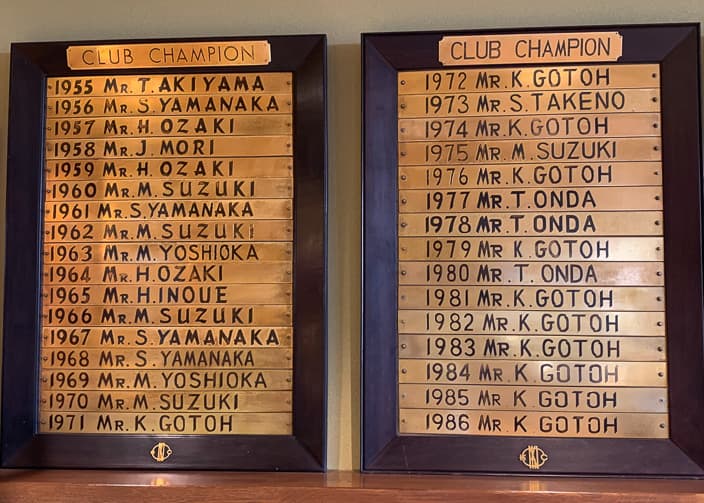
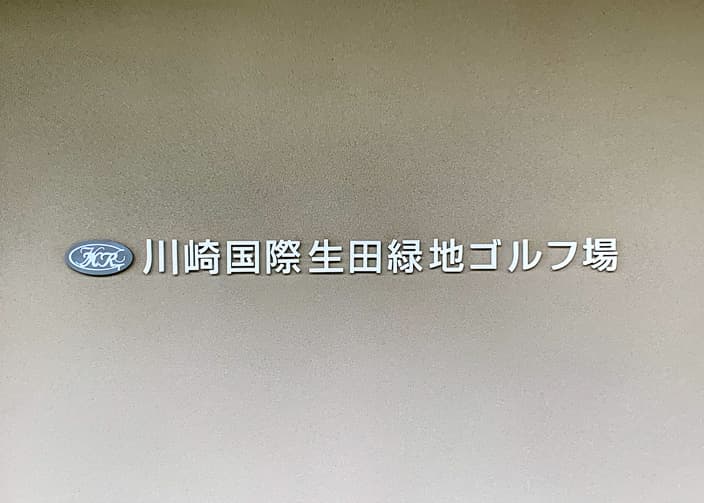
The design was carried out by Seiichi Inoue, who belonged to the design department of Adachi Construction, which had a good reputation for golf course construction at that time, and it will be his first work after the war ll. After that, he became independent as a course designer and produced famous courses such as “Oarai GC (1953)”, “Takanodai CC (1954)”, “Nikko CC (1955)” and “Nishinomiya CC (1955)”. This period is also called his masterpiece period.
After some hardship, it finally opened in 1952 with 9 holes, and in 1954, 9 holes were added to complete 18 holes. As a famous course designed by Seiichi Inoue, which is close to the center of Tokyo, it has long been popular with golf lovers under the nickname of “Noborito”.
However, due to the subsequent high growth and changes in the environment such as the development of residential areas around the course and the advancement of universities from Tokyo to the suburbs, residents would come to give various opinions about the use of city-owned land. As a result, after a long period of resident lawsuits and settlement of disputes, it was returned to Kawasaki City in 1992 and the purpose of use was changed to a public course for residents under a new name. Currently, the Tokyu Group is entrusted with the course management.
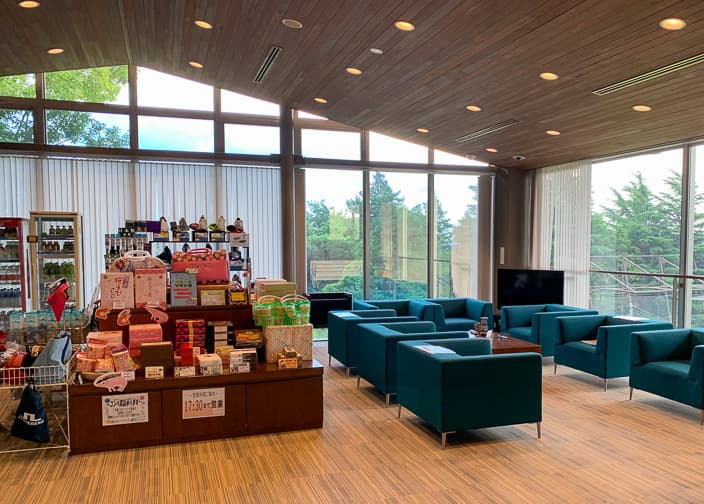
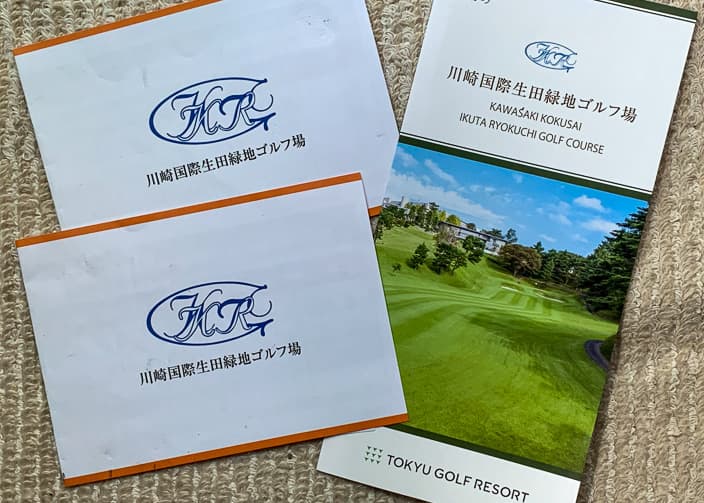
Although the course has such a strange and complicated history, the essence of the course does not change even if the operation form changes from membership to public. The course, which was created by mobilizing a large number of human resources without using heavy machinery and making full use of the natural terrain of the hills, has many steep ups and downs, and the narrow fairway always has slopes and swells.
The skillfully placed bunkers are deep and the greens are always on top of small hill with slopes, which is a beautiful and challenging course that is typical of Seiichi Inoue. Despite the distance is not long, each hole has a unique and varied layout, which requires high accuracy for every shot, and it is not easy for a player who is not accustomed to this course to play with a good score.
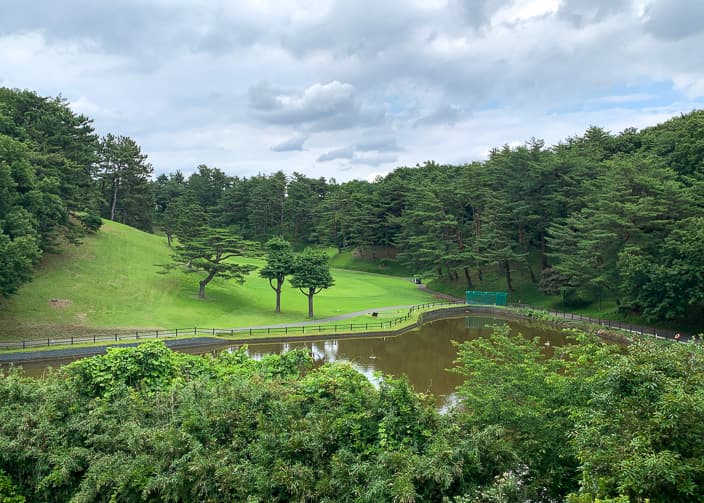
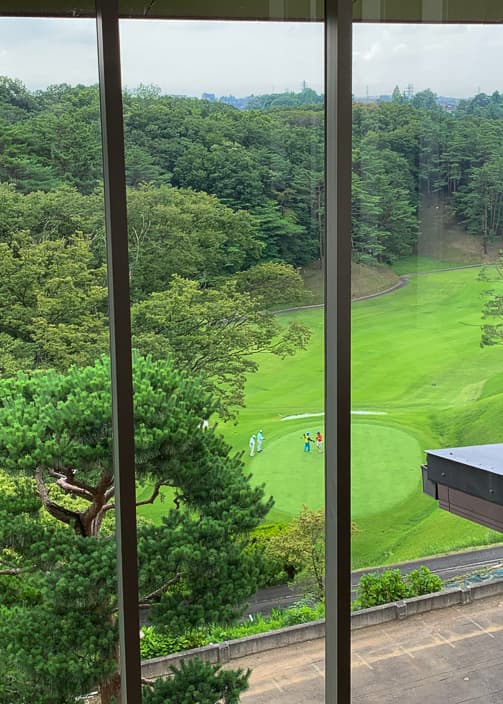
Let’s take a look at some of the major holes.
The 1st hole (480 yards, par 5) is a long hole that makes a large turn to the left, and the tee shot must be downhill and pass through the gap between the hills protruding from the left and right and a pond is waiting if you aim for a shortcut to fairway. From the second shot point, the uphill continues and you cannot see the top of the small elevated green at all, so if you hit with a large club and over, a fast downslope putt will remain.
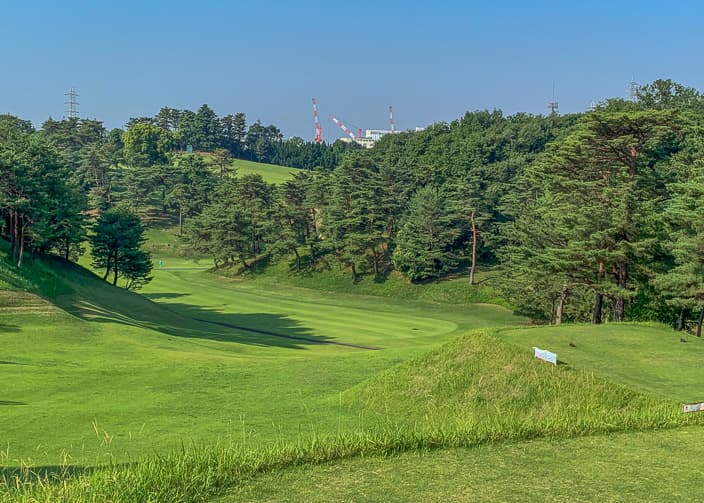
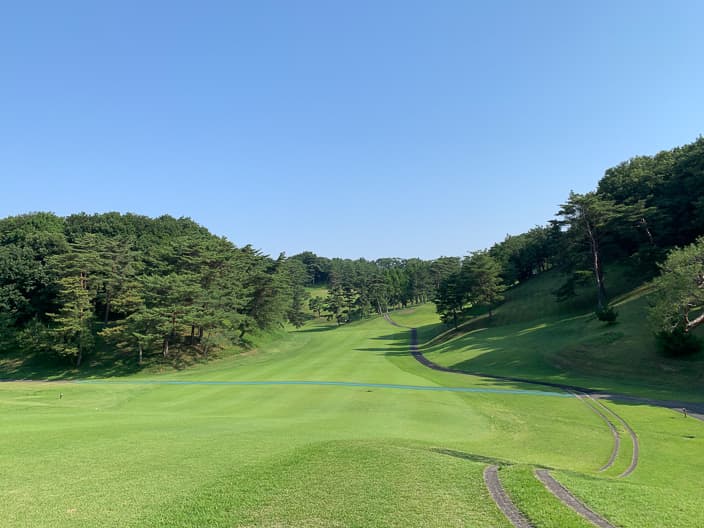
3rd hole (280 yards, par 4) This is relatively short middle hole, but there is a large depression in front of the tee ground, large trees grow on the left and right, and the fairway tilts to the left while climbing sharply. In particular, the Koryo Green is located on the top of a hill that looks up far away, and it is not easy to put it on a small green at an accurate distance.
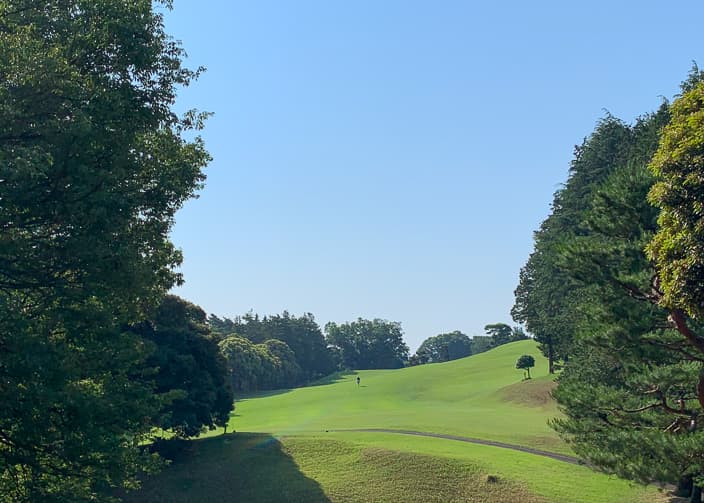
The 5th hole (390 yards, par 4) is a large valley about 200 yards from the tee ground. When the distance of the tee shot comes out, the ball falls to the bottom of the steep slope, where the fairway continues. However, the second shot will aim at a small green on a steep uphill, making it difficult to measure the sense of distance, and if the shot distance is not enough, a ball will be caught in a deep bunker on the slope in front of the green.
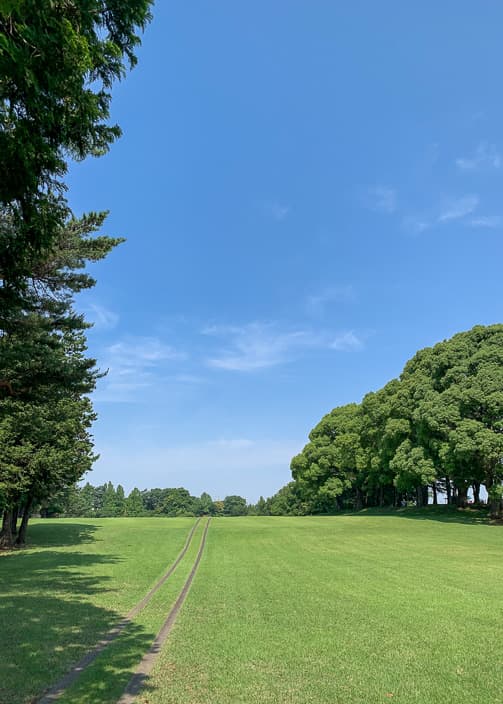
8th hole (490 yards, par 5)、Aiming at the stylish condominiums in front of you, you can hit a tee shot daringly, fortunately if you get on the steep descent from 100 yards away, a 300-yard shot is not a dream. However, if the ball stops in the middle of a steep slope, the second shot will be difficult.
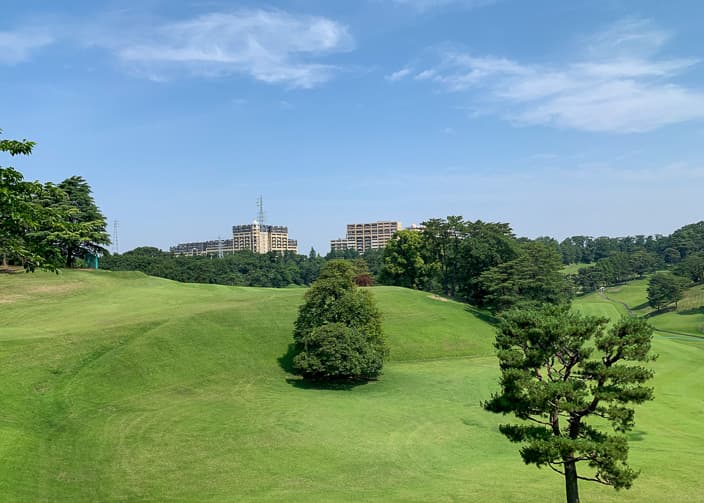
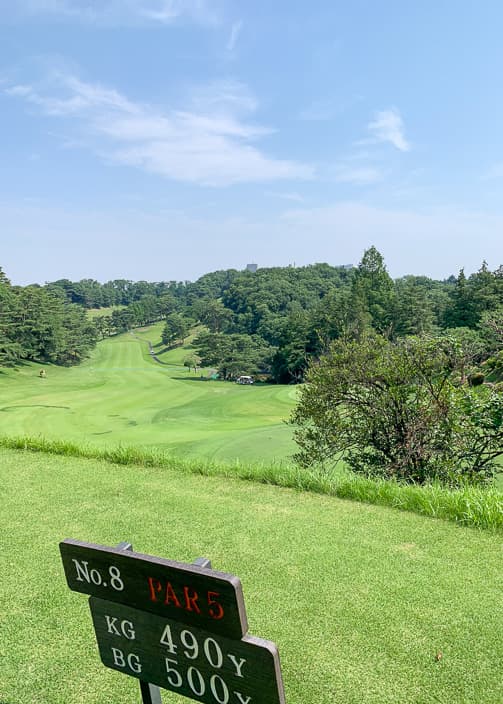
First half last , 9th hole (175 yards, par 3) is a relatively long short hole with a deep depression between the green and the tee ground. If the distance is not enough and the ball dropped under a cliff, it is necessary to launch it on a steep slope, and there are also large guard bunkers that spread to the left and right, so recovery shots are difficult and there is a risk of losing the score and affects the outcome of the first half, despite a short hole.
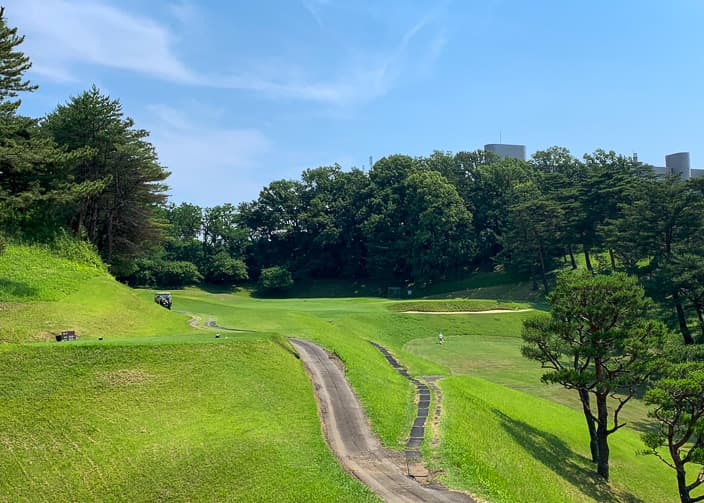
The 11th hole (375 yards, par 4) You can hit a shot comfortably from the tee ground on a hill with a good view, but you need to be careful about the left and right OBs. Since the second shot has a steep uphill slope, it is difficult to get an accurate sense of distance and it is necessary to select a large club, but the fairway has a steep slope and it is difficult to catch the pin accurately. In addition, since the player on the green cannot be seen from the following group, it is necessary to inform that the player is putting by pulling out the pin according to the local rule.
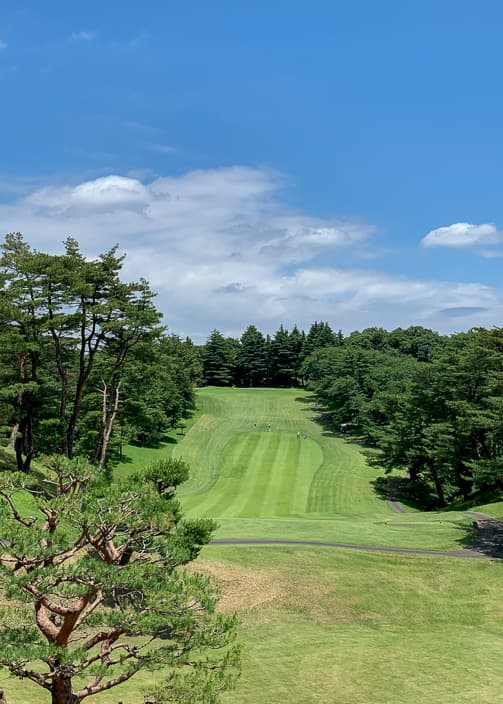
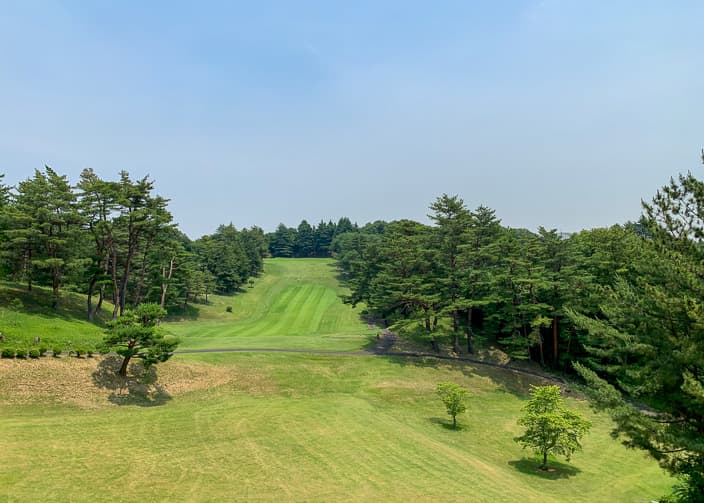
12th hole (420 yards, par 4) is an impressive hole that makes full use of the natural terrain downhill from the top of the hill. There is a tight undulation on the fairway under the steep slope that goes down to the bottom of the valley, and it is extremely difficult to aim for the green hidden behind the hill with the right dock wreck on the second shot.
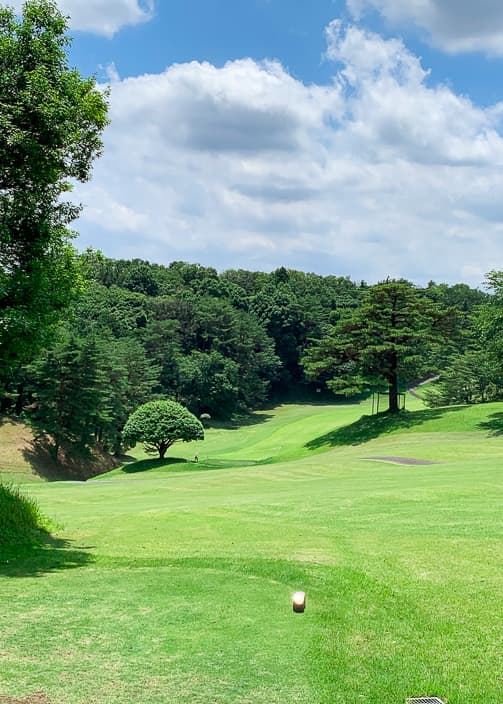
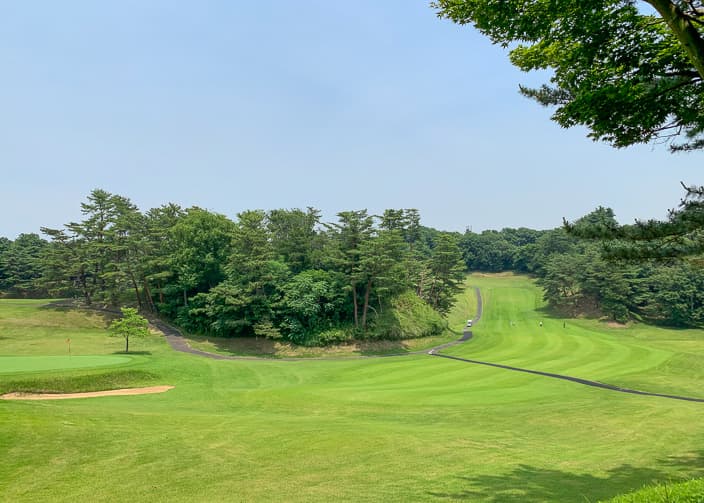
The 13th (165 yards, par 3) is another steep downhill short hole that requires a sense of distance and an accurate iron shot to catch the small elevated green far below. If the ball does not catch the green, it will fall down a steep cliff and require a difficult recovery shot.

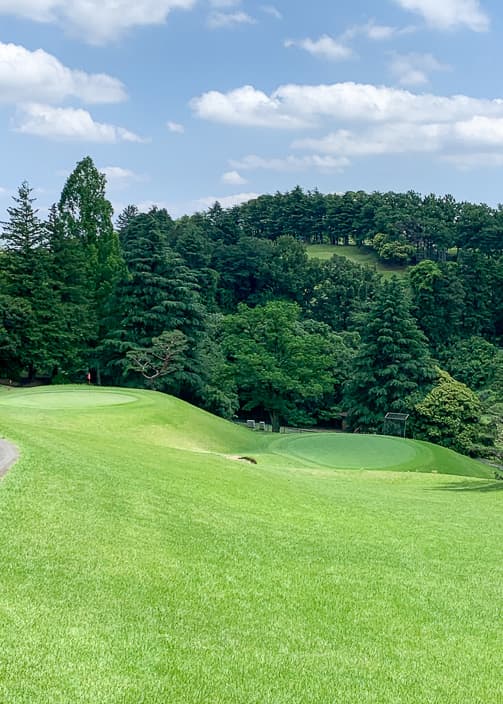
The 16th (150 yards, par 3) Another short hole has a deep valley in front of the tee ground, and the slope is uphill, so it looks farther than the actual distance and the correct club selection is the key.
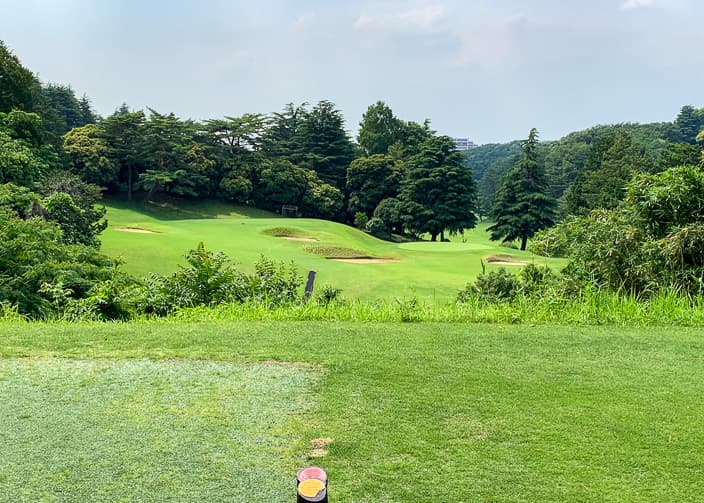
17th hole (485 yards, par 5) This is the only spacious and straight hole on the course. You can hit the tee shot comfortably, but be careful as there is a small pond in front of the tee ground and on the left side 230 yards away, and a stream continues to the green. The green is of course small and on a hill, but the distance is relatively short so it is also the easiest hole for birdie.
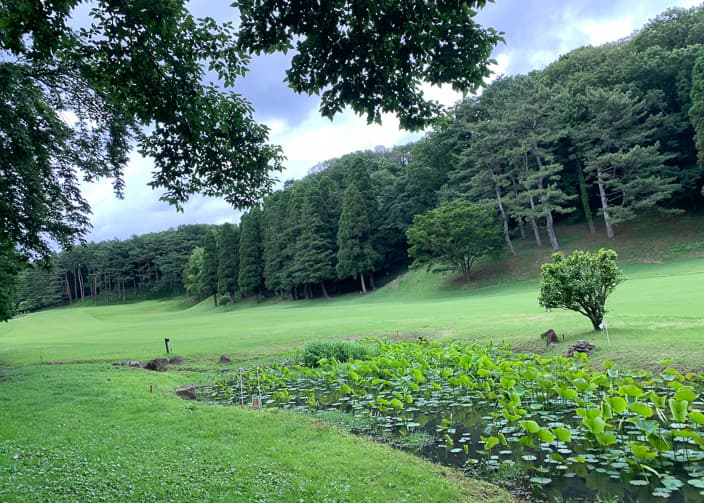
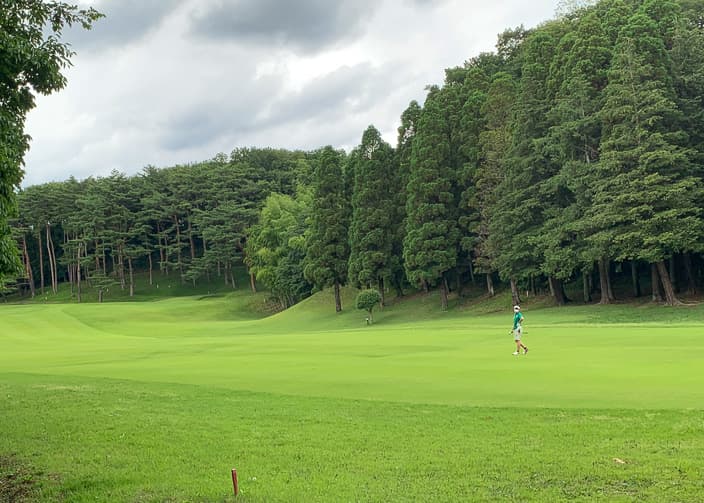
The final 18th hole (350 yards, par 4) is a downhill hole with a large pond in front of the tee ground. The fairway makes a large left turn from the tip of the pond, and the tee shot must cross the pond and the trees on the hill in a diagonal direction. The green is on a steep slope like a wall, and there is a large bunker in front of it, so a high ball is required for the second shot.
In addition, the green has a steep slope from the back to the front, if you pay too much attention to the wall and bunker and put ball in the back of the green, the putt will require high skill, so you will not be distracted until you hole out.
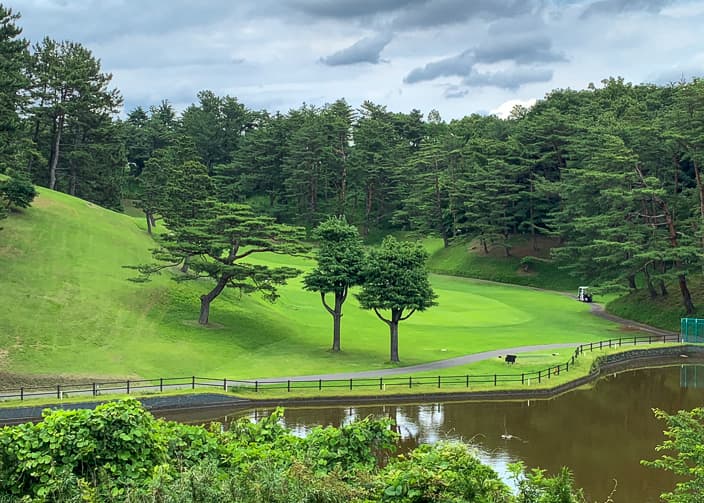
It is appreciated that anyone can easily play on a unique and beautiful course like the essence of Seiichi Inoue, which makes the best use of the natural terrain, How about making it the starting point for the Seiichi Inoue course pilgrimage?
It is very popular because it is about 30 minutes away from central Tokyo, so it is recommended to make an early reservation.
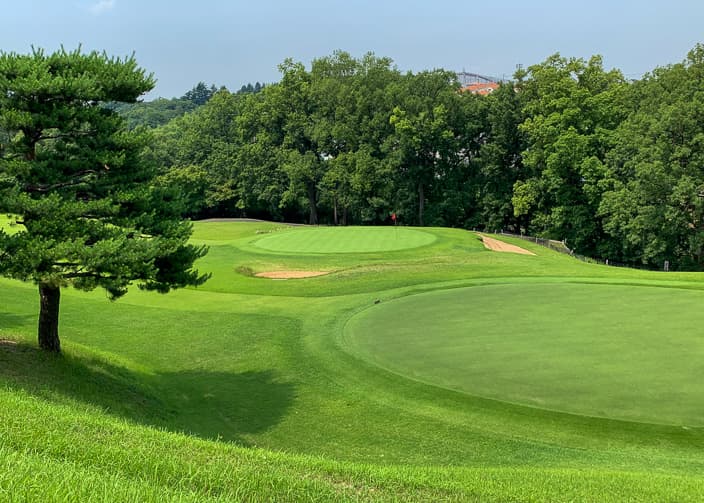
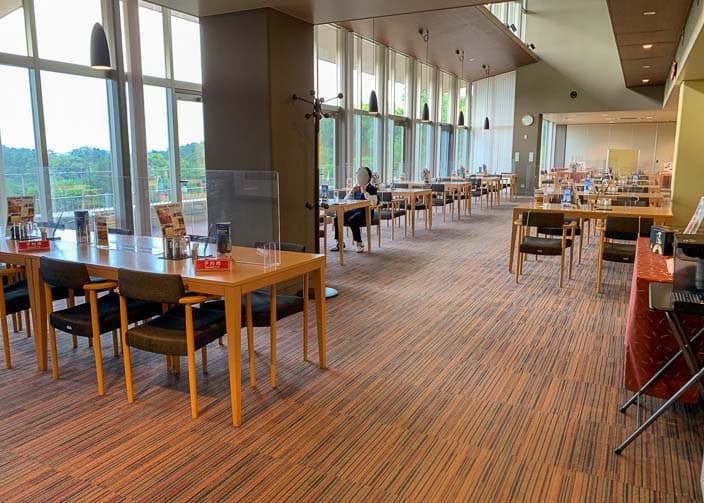
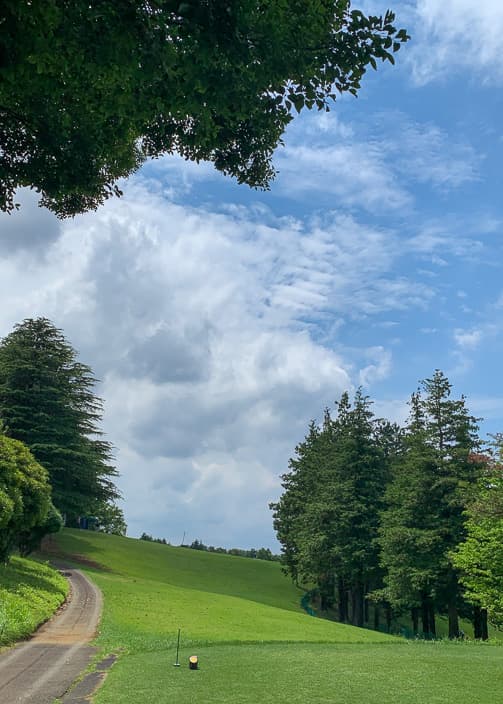
Kawasaki Kokusai Ikuta Ryokuchi Golf Course
| Address | 7-1-10 Masugata, Tama-ku, Kawasaki-shi, KANAGAWA |
| TEL | 044-934-1555 |
| Website | https://www.tokyu-golf-resort.com/kawasaki/ (Japanese Only) |

